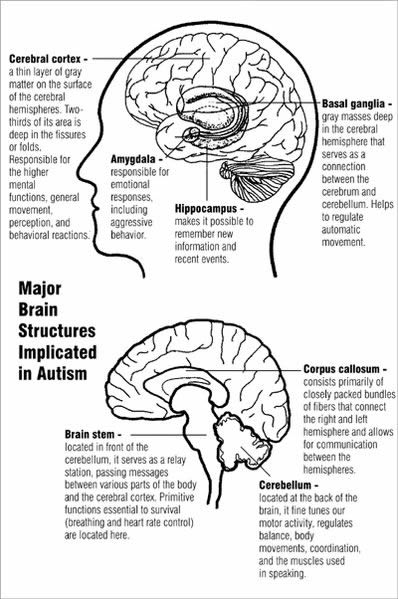The way people with autism see and process body language could prevent them gauging people’s feelings, according to new research.
With around half a million people in the UK affected by autism, the Durham University study suggests visual processing problems could be contributing to their day-to-day difficulties with social interaction.
The research showed that adults with autism spectrum disorder (ASD) found it difficult to identify emotions, such as anger or happiness, from short video clips of body movements without seeing faces or hearing sound.
Those adults who struggled most with this task also performed poorly when asked to detect the direction in which a group of dots moved coherently on a screen, thought to be due to visual processing problems.
People with autism often have difficulty in attributing mental states to others and this is thought to be one of the main causes of their struggle to know how other people feel. The Durham study, published in the academic journal Neuropsychologia, suggests visual processing problems may also be a contributing factor.
The findings of the study indicate that one of these visual processing problems is a difficulty in perceiving certain sorts of motion, particularly the movement of spatially separate elements spread over a relatively wide area that nevertheless move in the same direction, which is consistent with most previous findings.
The strong link between performances on the tests within the study suggests people with autism have trouble reading body movements because they process some basic visual information differently, according to Dr Anthony Atkinson from Durham University’s Psychology Department.
The typically developing adults – those without autism – in the study generally performed well in both tests.
Dr Atkinson, who led the study, says his findings help to further understand the underlying causes of social interaction problems experienced by people with autism.
Dr Atkinson said: “The way people move their bodies tells us a lot about their feelings or intentions, and we use this information on a daily basis to communicate with each other. We use others’ body movements and postures, as well as people’s faces and voices, to gauge their feelings. People with autism are less able to use these cues to make accurate judgements about how others are feeling. Our research attempts to find out why.
“Our findings point to a difficulty in perceiving or attending to motion as a contributor to the problem of gauging people’s emotions. We now need to look further to see how exactly this happens and how this may combine with potential difficulties in attention.”
Thirteen adults with ASD and 16 typically developing adults with the same age and IQ were studied. For the motion coherence test, participants were shown a number of dots on a computer screen with a certain number moving either left or right. The test had various difficulty levels depending on the percentage of dots moving coherently in one direction. This task taps one’s ability to see the moving wood as distinct from the individual moving trees, says the author.
For the second test, the study participants were shown two sets of short video clips of people’s body movements and had to identify the emotion expressed by those movements. In one set of video clips the whole body and head but not the face could be seen. The other set contained identical sequences of body movements but all that could be seen was reflective patches attached to the major joints.
Based on gestures and movements acted out in the videos, such as waving fists, stamping feet, and skipping, the study participants were asked to assign one of the basic human emotions to it: anger, disgust, sadness, fear or happiness. The individuals with autism were less accurate than the typically developing individuals in judging the emotions in both sets of video clips.
Dr Gina Gómez De La Cuesta, Action Research Leader at the National Autistic Society said: “This is an interesting study which supports the suggestion that people with autism may well process visual information differently to their peers.
“We warmly welcome all research which helps us further our understanding of autism, and how best to help and support those with the condition. Autism is a complex and lifelong disability, affecting an estimated half a million people in the UK, and the right support at the right time can make a huge difference to people’s lives.”
Some facts and figures (source: The National Autistic Society)
* Autism is thought to affect around half a million people in the UK today – that means 1 out of every 100 people has autism.
* Autism is a lifelong developmental disability that affects how a person communicates with, and relates to, other people. It also affects how they make sense of the world around them. It is a spectrum condition, which means that, while all people with autism share certain difficulties, their condition will affect them in different ways.
* Boys are four times more likely to develop autism than girls.
* People with autism often want to make friends but due to their disability find it difficult.
* 40% of all children with autism wait more than three years for a clear diagnosis.
* Click here to view example stimuli used in the study
Source: Durham University
,” by John Elder Robison. Jessica Kingsley Publishers released three books this spring: “22 Things a Woman Must Know If She Loves a Man With Asperger’s,” by Rudy Simone; “The Love-Shy Survival Guide


